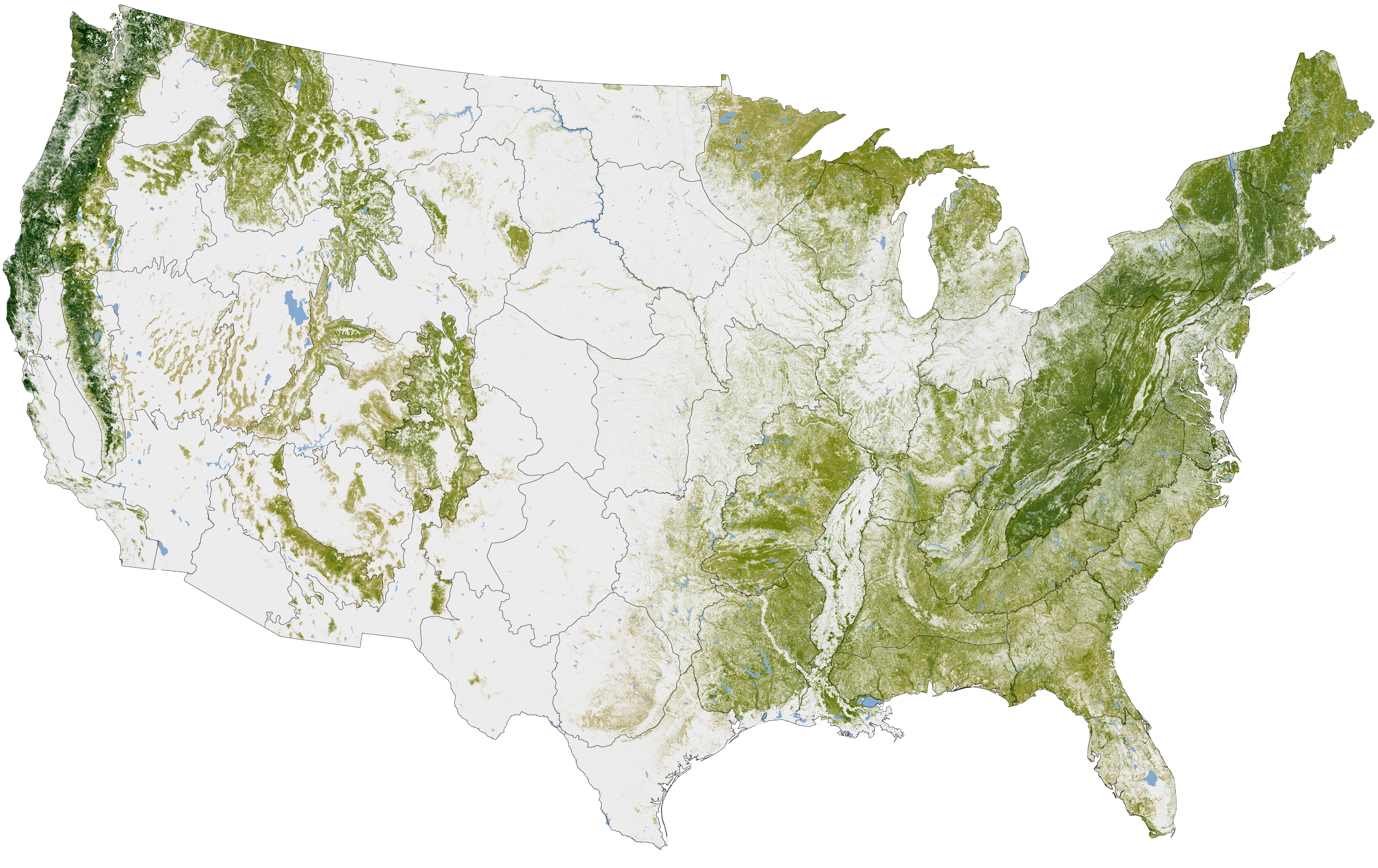How Much Carbon Can America's Future Forests Hold?
 The global climate is changing, and so are forests. A large fraction of all CO2 emitted on earth is absorbed and stored as woody biomass in trees, so it's important for us to understand the dynamic processes determining forest extent if we are to accurately forecast and mitigate climate change. This work asks how forest age, size, and spatial distribution will change with projected warming and drying of the environment.
The global climate is changing, and so are forests. A large fraction of all CO2 emitted on earth is absorbed and stored as woody biomass in trees, so it's important for us to understand the dynamic processes determining forest extent if we are to accurately forecast and mitigate climate change. This work asks how forest age, size, and spatial distribution will change with projected warming and drying of the environment.
Results demonstrate that a warmer future allows more time for forests to grow during the year, but it also leads to less available water for the trees to use, primarily affecting older forests.
Older forests harbor larger trees that often require more water, so drought-induced death will not only change the size composition of America's forests, but also diminish its carbon sequestering ability. In contrast, young forests in the East are projected to hold more carbon under the same conditions, offsetting some of the negative effects of older forest death.
Below, you can mouse over counties to see how biomass accrual differs spatially, or you can select and move a range of biomass-change values from the blue distribution bars to see which counties fall within that range on the map.
The Western United States remains blank for now because repeated forest censuses are required to project biomass change. The Forest Inventory Analysis, where these data come from, has the deepest archive of data in the relatively well-forested Eastern United states.
Bottom map of relative biomass concentration from 2011 data provided for comparison.
